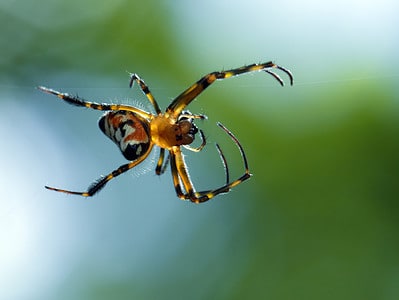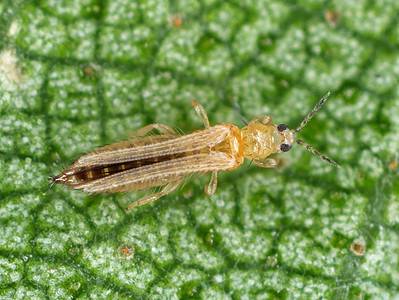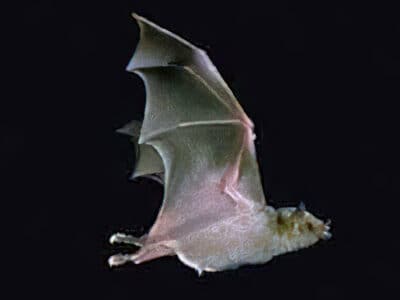Advertisement
English Toy Terrier Scientific Classification
- Kingdom
- Animalia
- Phylum
- Chordata
- Class
- Mammalia
- Order
- Carnivora
- Family
- Canidae
- Genus
- Canis
- Scientific Name
- Canis lupus familiaris
Read our Complete Guide to Classification of Animals.
English Toy Terrier Conservation Status

English Toy Terrier Facts
- Diet
- Omnivore
English Toy Terrier Physical Characteristics
English Toy Terrier as a Pet:
- General Health
- Energy Level
- Shedability
- Trainability
- Intelligence
- Tendency to Chew
- Size
- Family and kid friendliness
- Yappiness / Barking
- High
- Separation Anxiety
- High
- Preferred Temperature
- Average climate
- Exercise Needs
- Low
- Friendly With Other Dogs
- Moderate
- Pure bred cost to own
- $1,000
- Dog group
- Toy
- Male weight
- 6-8 lbs
- Female weight
- 6-8 lbs
View all of the English Toy Terrier images!
The English toy terrier is a small dog breed that belongs to the toy dog group. They were bred in the 19th century originally as a vermin hunter that was small enough to hunt rats. They were developed in England from breeds known as the old English black and tan terrier dog breeds.
The English toy terrier was bred for speed and agility for rat pitting where the dogs were placed in a pit with rats and bet on how fast they could catch and kill the rats. Soon after rat pitting was outlawed, their elegant appearance in the show ring was a success, and the Kennel Club formally recognized two varieties of the English toy terrier, the tan and black colorations at the time.
In the United States, the English Toy Terrier is referred to as the standard variety Manchester terrier. The name English toy terrier was then used in the 1960s to describe this dog breed.
The 2 Different Types Of English Toy Terriers
There are only two formal varieties of the English toy terrier – the Manchester or the Miniature black and tan terrier. They were described by two different names from the 1920s until the English toy terrier name was used to describe both dog varieties in the 1960s.
- Manchester toy terrier- Has a jet-black coat with chestnut markings and a small, body with a sleek coat.
- Tan and black toy terrier- Fast and agile with a black and tan coat and was bred for hunting vermin like rats.
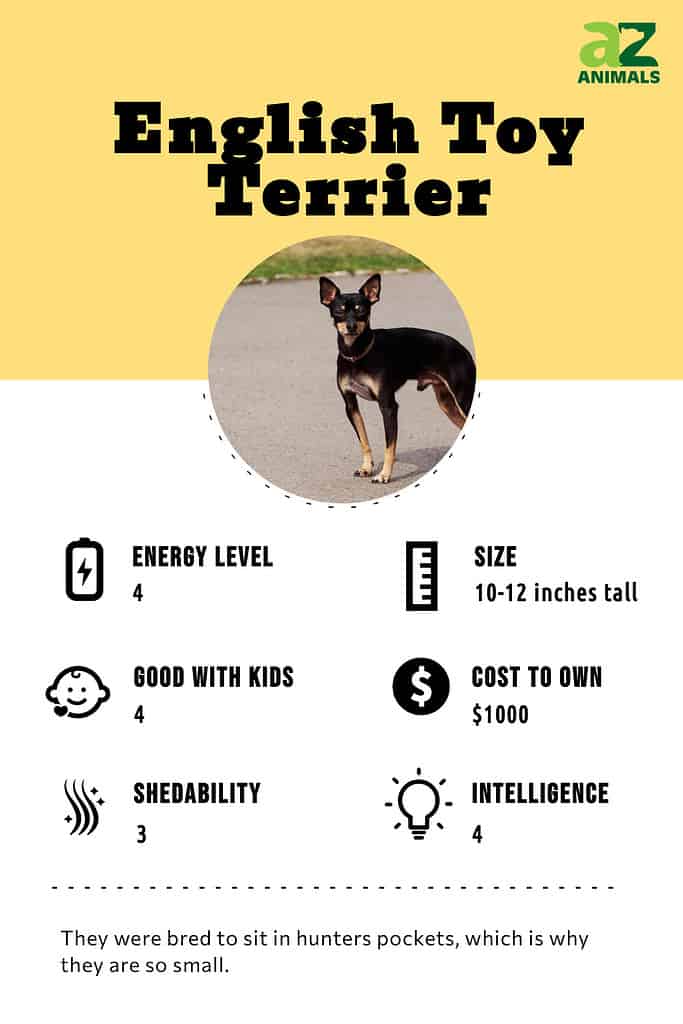
Fun Fact About English Toy Terriers
The English toy terrier was originally created to hunt rats and rabbits for a sport known as “rat pitting”. Today, however, they are lovely canine companions throughout the world.
3 Pros And Cons Of Owning English Toy Terriers
| Pros | Cons |
|---|---|
| Suitable for apartment living since they are a small dog breed that does not take up much space. | Prone to barking a lot or aggressiveness on leashes in public. |
| A comical and playful small dog breed that loves to play fetch or go for walks with their owners. | Not safe to keep around small pets like rabbits, rats, hamsters, and guinea pigs due to their instinct to hunt these animals. |
| A low-maintenance dog breed thanks to their short and manageable coat. | Can be possessive over their toys and food. |
The Best Dog Food For English Toy Terriers
Like all dogs, the English toy terrier is an omnivore that needs both plants and vegetables in their diet. You can choose from a well-rounded pelleted food formulated for small toy dog breeds, or you can choose a high-quality wet, raw, or freeze-dried food.
Since the English toy terrier is an active dog breed that uses a lot of energy throughout the day, they will benefit from a protein-rich diet with minimal carbohydrates in their diet as an adult. A balance of healthy fats, vitamins, and mineral is a good option for this breed.
Some good foods for English toy terriers include:
- Blue Buffalo Life Protection Formula Natural Dry Dog Food
- Hill’s Science Diet Wet Dog Food for Small Breeds
- Instinct Freeze-Dried Raw Meals Dog Food
Size And Weight
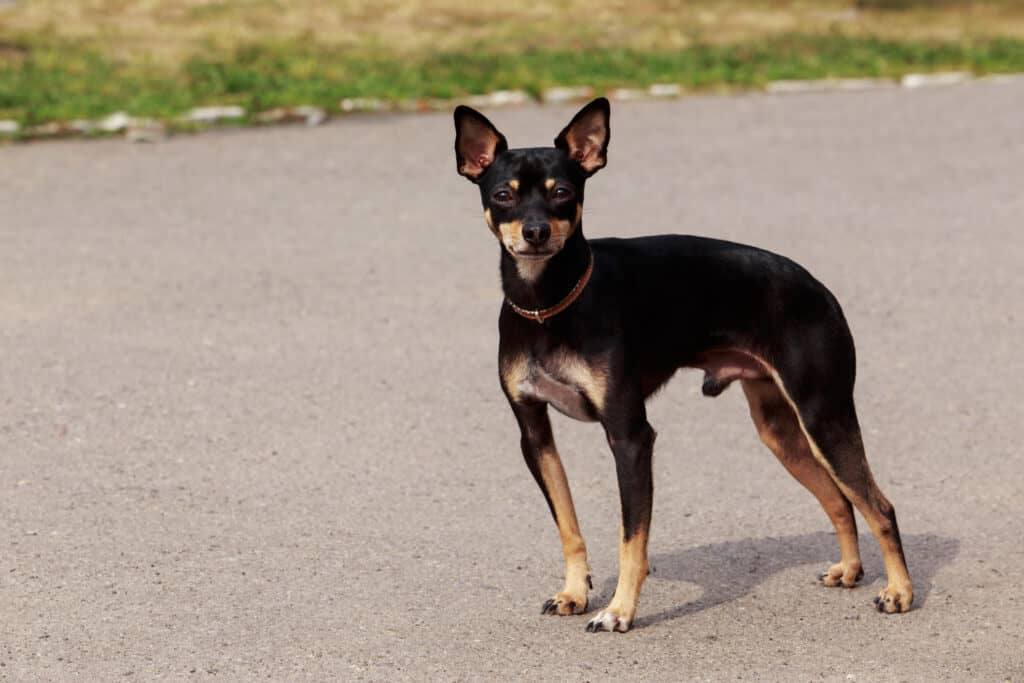
As rather small dogs, English toy terriers reach only about 10 to 12 inches.
©iStock.com/DevidDO
English toy terriers are quite small dogs, only reaching an adult size of 10 to 12 inches (25 to 30 cm). They are a small dog breed which makes them suitable for apartment living and they do not require a large garden to run in, so a small yard will suffice. The English toy terrier is easy to pick up and handle due to their small size, and they rarely weigh more than 6 to 8 pounds (3 to 4 kg) as a healthy adult weight.
Common Health Issues
The English toy terrier is a relatively healthy dog breed that is prone to few genetic or other chronic health issues. As long as they are fed a healthy and balanced diet, get enough exercise, regularly interacted, and have regular veterinarian check-ups, then they will be able to remain healthy for most of their life. However, even the most well-looked-after English toy terrier is not exempt from disease, genetic condition, or other health issues.
These are the most common health issues you should expect in the English toy terrier dog breed:
- Cataracts- A cloudy appearance in the dog’s eye, usually caused by old age.
- Patellar Luxation- A dislocated patella is usually inherited from the parents; however, it can happen due to an injury unrelated to genetics.
- Juvenile Dilated Cardiomyopathy- Inherited and fatal disease that results in a birth defect due to genetics. It is a heart disease that can affect young dogs.
- Legg-Calves-Perthes Disease- A chronic and degenerative disease in dogs that affects their femur bone which results in hip collapses.
- Xanthinuria- A hereditary rare autosomal disorder that affects the metabolism in dogs and is categorized into type 1 (xanthine dehydrogenase) and type 2 (molybdenum cofactor sulfurase).
It is important to take your English toy terrier to the vet frequently, especially as a puppy or senior. Healthy adult English toy terriers will need a regular health check-up by a veterinarian at least three times a year. Early detection of certain illnesses is usually easier to treat which ensures your English toy terrier will have a fast recovery.
Temperament

An English toy terrier can suffer from separation anxiety but they are curious and intelligent dogs.
©Lil Shepherd/Wikimedia Commons – License
English toy terriers have a playful and affectionate temperament, but some English toy terriers can be quite skittish and suffer from separation anxiety if they are away from their owners. Overall, their temperament is quite pleasant and desirable, and they have curious, intelligent, and warm traits that make them well-mannered dogs.
Some downsides to the English toy terrier’s temperament are that they are prone to excessive yapping, just like many other small dog breeds. They may bark or yap at strangers, passersby on a walk, other dogs, and even to get your attention. These behaviors shouldn’t be a major problem in this dog breed if they are well-trained, however, it is something to consider if you plan to keep them in a quiet apartment.
How To Take Care Of English Toy Terriers
The English toy terrier is considered to be a fairly low-maintenance dog. This is because they have low grooming and exercise requirements in comparison to large dog breeds.
Maintenance And Grooming
The English toy terrier has a short sleek coat that does not require much grooming. A brush a few times a month will suffice. They should be washed every three to six weeks. That frequency depends on how much hair they shed or if they get dirty quickly. Your English toy terrier will need to have its nails trimmed every couple of months to prevent overgrowth.
Training
You can easily train the English toy terrier because their intelligence and loyalty make them eager to learn. Although this dog breed can be stubborn or even independent at times, they can be housetrained over time. The best age to train an English toy terrier is when they are still in their puppy stage. It is possible to train them as they get older, though.
Sometimes training can be a challenge. That’s why having a good reward system such as treats is good when training. As with all dogs, this allows them to associate training with a positive experience.
Exercise
English toy terriers have low exercise requirements, and exercise should be fairly low. They will benefit from half an hour of gentle exercise each day. This can be a short walk or a game of fetch in a secured area.
Most of their activity levels seem to be contained by running around the house or jumping around furniture during the day. Even though they have low exercise requirements, you still need to provide your English toy terrier with mental and physical stimulation through toys or interactive games once a day to prevent boredom.
Puppies
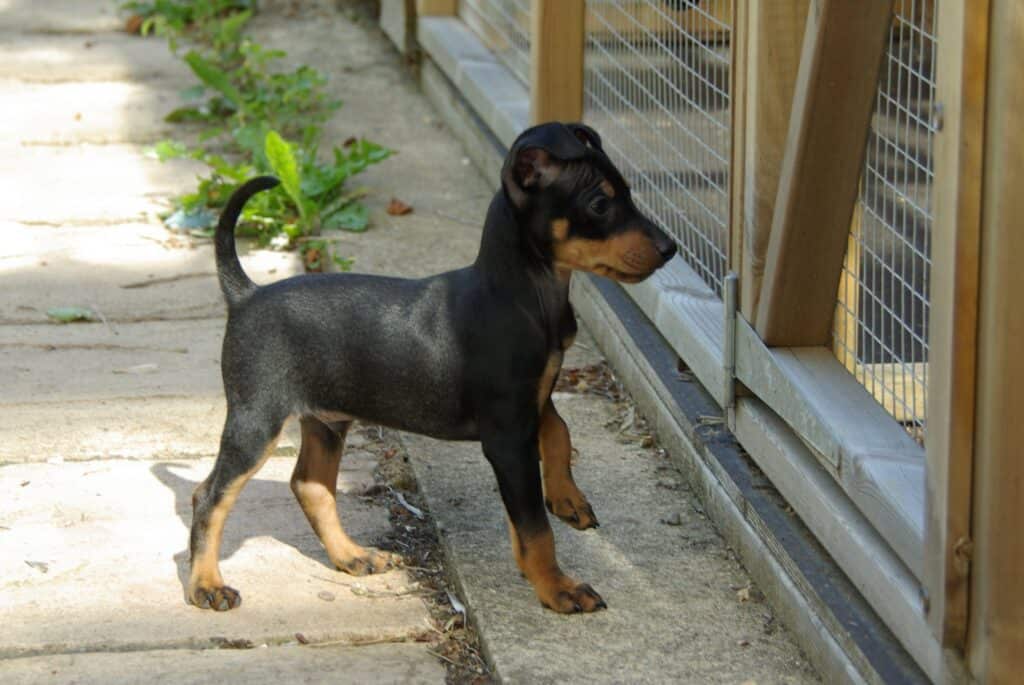
An English toy terrier puppy can start training at around 8 weeks of age but they can be easily distracted.
©Lil Shepherd/Wikimedia Commons – License
English toy terrier puppies are bursting with energy, but their small size can make them fragile when they are young. Puppies can start their training at around 8 weeks of age. They should learn the basic house-training cues during this time. Puppies can be distracted easily, so they need a lot of patience to care for.
A balanced small dog food suited for puppies will suffice until they are an adult at one year old. They should be provided with plenty of toys and fun games to keep them busy.
English Toy Terriers And Children
Children and English toy terriers can get along quite well, but their energy levels and temperament are better suited for older children who know how to handle this fragile dog’s small size. They are not known to be aggressive to children, but they might bark or run away if they feel scared of a child trying to pick them up.
Since the English toy terrier can become possessive over food and toys, they might not be happy if it is taken away from them by children who are trying to play, and they might lash out.
However, if they are socialized with children and have had a positive experience, then this is rarely a problem. The English toy terriers’ small size and timid yet affectionate temperament is also a low concern in terms of aggression towards children.
Dogs Similar To English Toy Terriers
There are several small dog breeds that share some degree of similarity to the English toy terrier. This includes a resemblance to the English toy terriers’ size and body structure.
- Cairn terrier – A energetic and alert small dog breed with a wiry coat and small size originating from the Scottish Highlands.
- Löwchen- A non-shedding dog breed with a long, flowing coat that is European.
- Tibetan spaniel – A fancy small dog breed with a soft and long coat originating from Tibet.
- Ibizan hound – A small dog from the hound family with a smooth, short coat originating from the Balearic Islands.
Famous English Toy Terrier
There is one English toy terrier that became popular in 1848 when they were made to fight in rat pits. An English toy terrier named “Tiny” became famous after reportedly killing 300 rats in less than an hour, which shows how brave and quick these small dogs can be when put to the test. Tiny was a miniature black and tan terrier with a “bigger bite than bark”.
Popular Names For English Toy Terriers
Some popular names for English toy terriers include:
- Bella
- Luna
- Lola
- Foxy
- Titch
- Duke
- Tiny
- Rocco
English Toy Terrier FAQs (Frequently Asked Questions)
How much do English toy terriers cost to own?
The English toy terrier itself costs around $600 to $1,500 if they are purchased from a breeder. However, if you get an English toy terrier from a shelter or rescue, you only need to pay the adoption fee which costs around $75 to $100. After the initial purchase, you should expect to pay between $60 to $200 to maintain this dog breed.
Are English toy terriers good with kids?
English toy terriers can be great with older children who know how to properly handle and interact with this dog breed since they can be skittish or lash out if they feel threatened.
How long do English toy terriers live for?
The English toy terrier has an average lifespan of 12 to 13 years, but they can exceed this lifespan and even live to be around 15 years of age.
Thank you for reading! Have some feedback for us? Contact the AZ Animals editorial team.
Sources
- Wikipedia , Available here: https://www.bing.com/search?q=english+toy+terrier+wikipedia&qs=n&form=QBRE&sp=-1&pq=english+toy+terrier+wikipe&sc=10-26&sk=&cvid=90C030ABA79E411CB018A3D3BFA99B92&ghsh=0&ghacc=0&ghpl=
- PetMD, Available here: https://www.petmd.com/dog/breeds/c_dg_toy_manchester_terrier







